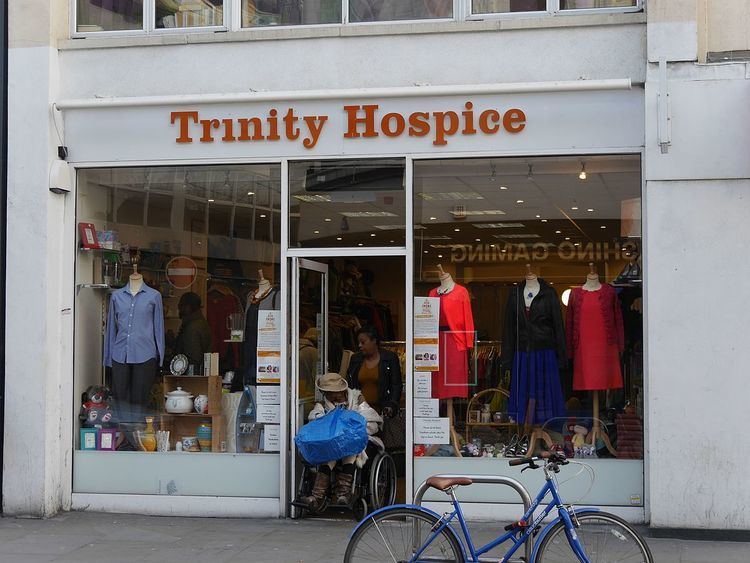Phone +44 20 7787 1000 | ||
 | ||
Address 30 Clapham Common North Side, London SW4 0RN, UK Hours Open today · Open 24 hoursThursdayOpen 24 hoursFridayOpen 24 hoursSaturdayOpen 24 hoursSundayOpen 24 hoursMondayOpen 24 hoursTuesdayOpen 24 hoursWednesdayOpen 24 hoursSuggest an edit Profiles | ||
Royal Trinity Hospice is the United Kingdom's oldest hospice, founded in 1891 by a member of the Hoare banking family. It is located in Clapham Common, London, England and provides specialist palliative care. Trinity Hospice provides its specialist services free of charge for those who need them in its community of over 750,000 people from central and south-west London.
Contents
History
William Hoare created the Hospice when he appealed for funds to provide a home "for the man who is neither curable nor incurable, but simply dying". He gave £1,000 of the £2,000 needed to set up the Hostel of God, as Trinity was originally called. The remainder was raised by public subscription.
By 1894 Trinity had ten beds. Patients were cared for by the Order of St James's Servants of the Poor, a teaching order of nuns. In 1896 the Society of Saint Margaret of East Grinstead, a nursing order, took over. In 1899 the hospice moved from The Chase to Clapham Common Northside. By 1933 Trinity had 55 spaces in the Hospice and was constantly caring for those in need. The much needed service continued to grow with the opening of the 25-bed St Michael’s ward in 1953, bringing the bed total to 75.
During the 1960s and 1970s, significant changes were made in the philosophy of running hospices, and more focus was put on symptom relief and enhancing a patient's quality of life to the end. Trinity Hospice still follows this policy today, putting the patient's quality of life first.
In 1977 the running of Trinity Hospice was transferred from the hands of the nuns to Trinity's Council, which had been in place since the early 1900s. The hospice became a secular independent home.
From 1978 to 1985, the first refurbishment programme took place, which included a renovation of its magnificent gardens. During this period only 18 beds were occupied. This was not only due to the work going on but also a consequence of the increasing popularity of end of life care in the home. Thirty beds were available on completion of the work.
In 1980, Trinity's first full-time medical director was appointment and its home-care team was established, offering their services to people suffering from terminal illnesses in their own homes. 1980 was also the year that Trinity took its current name and officially stopped being the Hostel of God. During the 1980s Trinity expanded its services in education and in 1987 opened a day centre to outpatients.
Trinity celebrated its centenary in 1991 with a service in Westminster Abbey. In the 1990s, treatment was broadened to include any patient with a life-threatening illness. This continues today, as does a greater emphasis on the needs of carers.
In 2009 an entirely new and purpose built inpatient centre has been added, designed around the needs of the patients. The building has greatly improved the services provided at Trinity, offering patients private, en suites, family-friendly areas, counselling and bereavement rooms, new medical facilities and balconies overlooking peaceful gardens.
Residents
Among those who have stayed at the hospice are:
